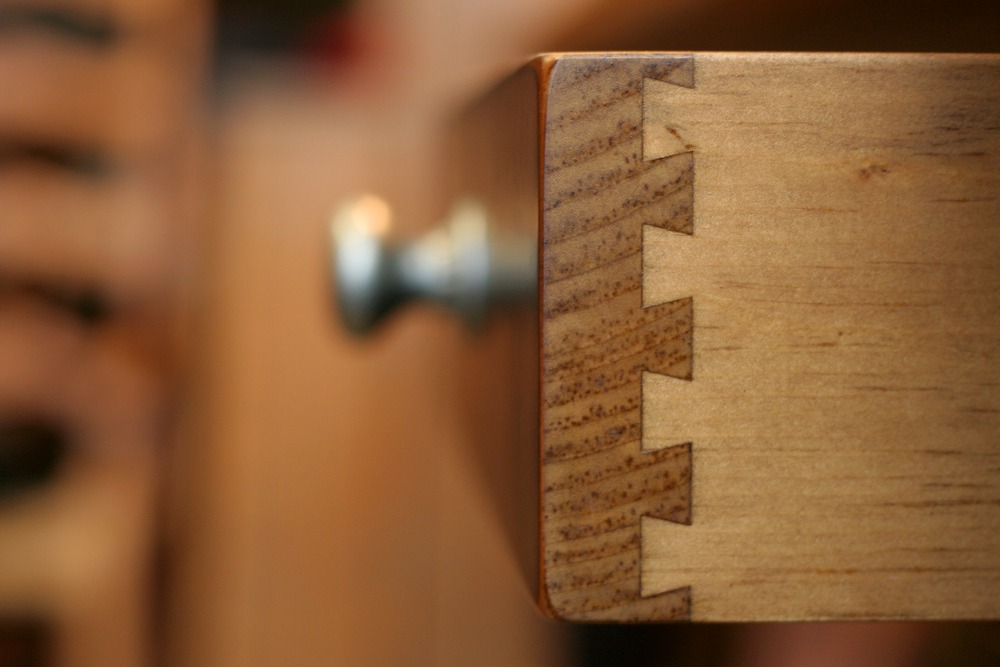Dovetail joinery is used in woodworking projects to make a variety of wood products with some amount of craftsmanship. Tails on one side of a wooden board resemble a “dove’s tail” and pins interlock tails from the opposite side of the joint.
It is a tight fit that is not possible for pulling apart on all sides except for one side. Additionally, when wood glue is added to clamp together the joint, pulling becomes impossible in all directions. In fact, dovetail joints are considered as the strongest among all types of joints that will fit tightly even if good glue is not used for that.
Wooden dowel joints differ from dovetails in the sense that they are made with holes and dowel pins. There is an array of dovetail joints, which woodworkers can choose from as per the woodworking project, its functionality, and the design. A right dovetail joint type would allow you to reinforce joints on wooden furniture. Below are the 3 prominent types of dovetail joinery used in woodworking projects.
Through Dovetail Joint
This is the most basic type of dovetail joints that woodworkers use. In this method, two wooden pieces are joined intact at either end. The interlocks stay visible from the outside corners, and hence, they are also known as plain dovetail joints. This dovetail joinery is usually used to join the corners of cabinetry, frames, and so forth.
Full Blind Dovetail
This dovetail joint is used to join high-profile cabinets and involves extensive box work and intricate cuts. Woodworkers join the outside edge of a wooden board with a corner made by inside edge and a marked line. It gives a 45-degree angle across the wood grain while keeping the dovetails internally hidden inside the joint. Hence, they are also known as secret mitre dovetail joint that provides the tensile strength of standard dovetail joint.
Sliding Dovetail Joint
This dovetail joinery technique has plenty of applications; everything from the construction of cases to leg to rail joinery of wooden tables involves using sliding dovetail joints. Think of it as a combination of a dado joint and a dovetail, featuring a groove on one side and a tongue at the other. This type of dovetail joint is interlocked by sliding the tongue into the groove.

